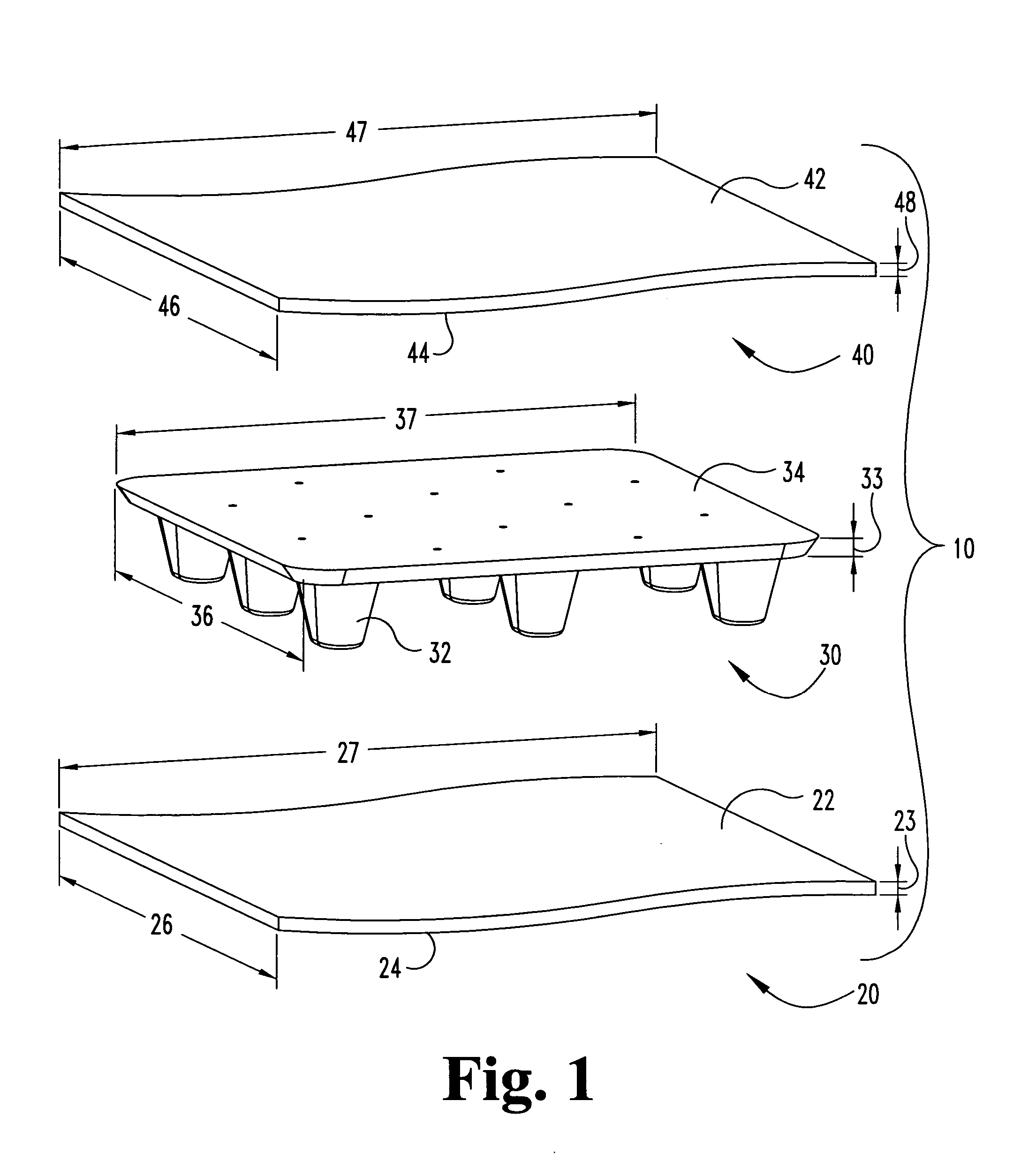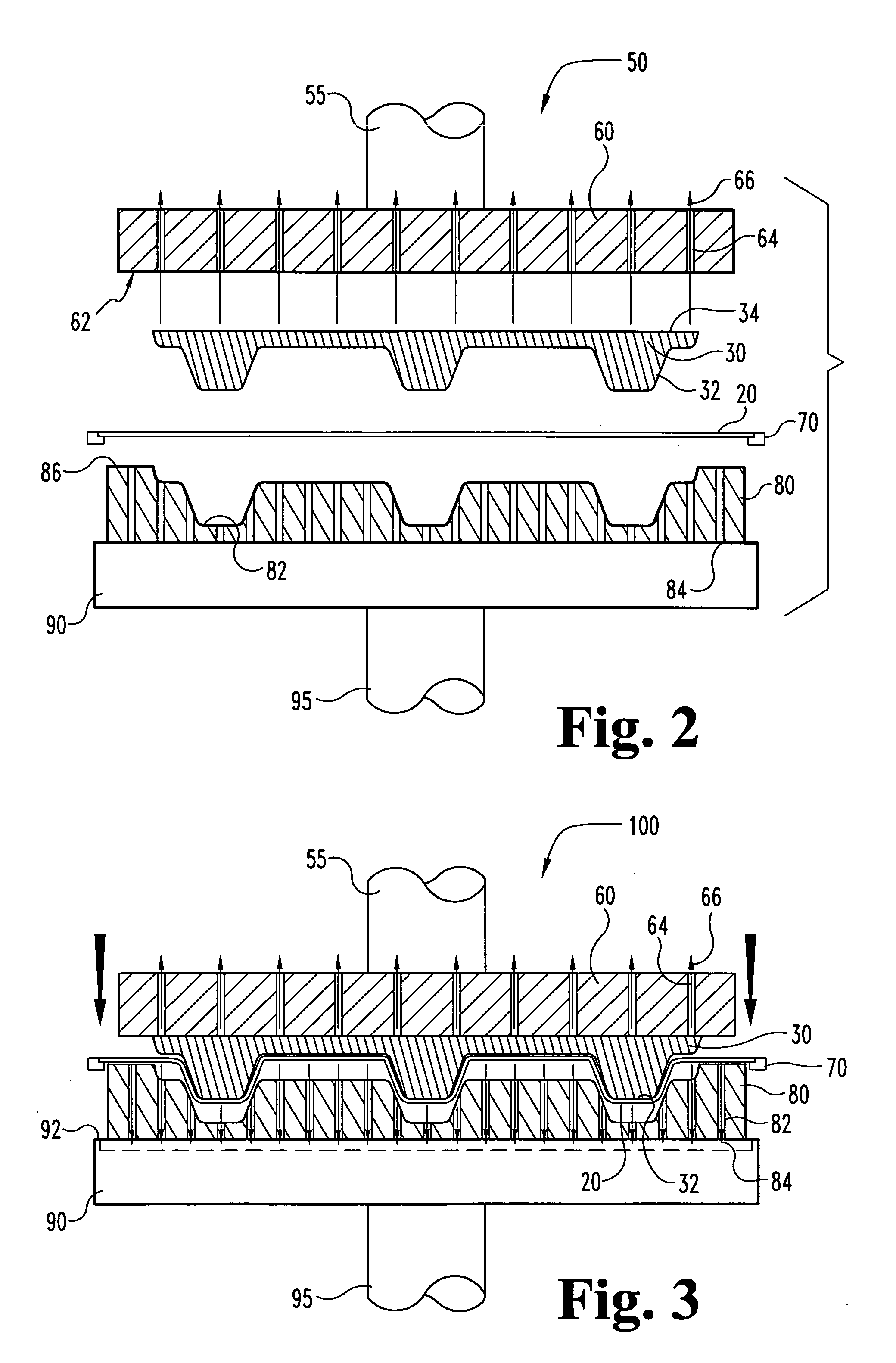Method of molding load-bearing articles from compressible cores and heat malleable coverings
a technology of compressible cores and load-bearing articles, which is applied in the field of methods of forming load-bearing articles, can solve the problems of insufficient attractive force supplied by vacuum alone, the method of manufacturing articles is not as well, and the most hollow articles are not suitable for use in load-bearing applications, etc., to achieve the effect of strengthening and stabilizing the articl
- Summary
- Abstract
- Description
- Claims
- Application Information
AI Technical Summary
Benefits of technology
Problems solved by technology
Method used
Image
Examples
example 1
[0143] A Four-Station Rotary Twin Sheet Thermoformer manufactured by BROWN was used to produce a load-bearing article in the shape of a pallet. The finished pallet was 24 inches wide and 40 inches long. The pallet had two sets of three legs each (one set of legs fewer than the pallet illustrated in FIGS. 8-11).
[0144] The pallet was constructed from two 28 inch wide by 44 inch long sheets of Thermoplastic Olefin TPO. The TPO used in this example was manufactured by SOLVAY and has brand name SEQUEL E3000. Each sheet of TPO was on the order of 0.04 inches thick. The pallet core member was approximately 24 inches wide and 40 inches long. The overall shape of the core member included two sets of three legs.
[0145] The setting of the Thermoforming Machine used are listed in Table VI.
TABLE VIMachine settings for the BROWN Four-Station Rotary Twin SheetThermoformer used in manufacture the pallet of Example 1.FORM FUNCTIONFORM FUNCTIONCYCLE TIMERSSECONDSCYCLE TIMERSSECONDSTop Plat Down0.1...
PUM
| Property | Measurement | Unit |
|---|---|---|
| thick | aaaaa | aaaaa |
| thick | aaaaa | aaaaa |
| thick | aaaaa | aaaaa |
Abstract
Description
Claims
Application Information
 Login to View More
Login to View More - R&D
- Intellectual Property
- Life Sciences
- Materials
- Tech Scout
- Unparalleled Data Quality
- Higher Quality Content
- 60% Fewer Hallucinations
Browse by: Latest US Patents, China's latest patents, Technical Efficacy Thesaurus, Application Domain, Technology Topic, Popular Technical Reports.
© 2025 PatSnap. All rights reserved.Legal|Privacy policy|Modern Slavery Act Transparency Statement|Sitemap|About US| Contact US: help@patsnap.com



